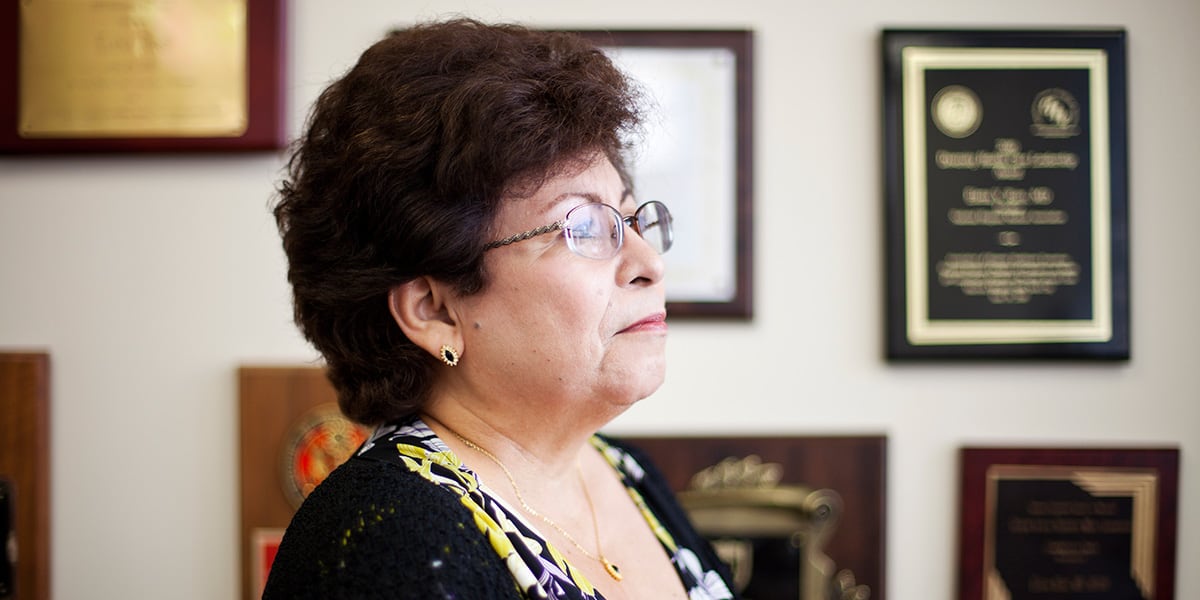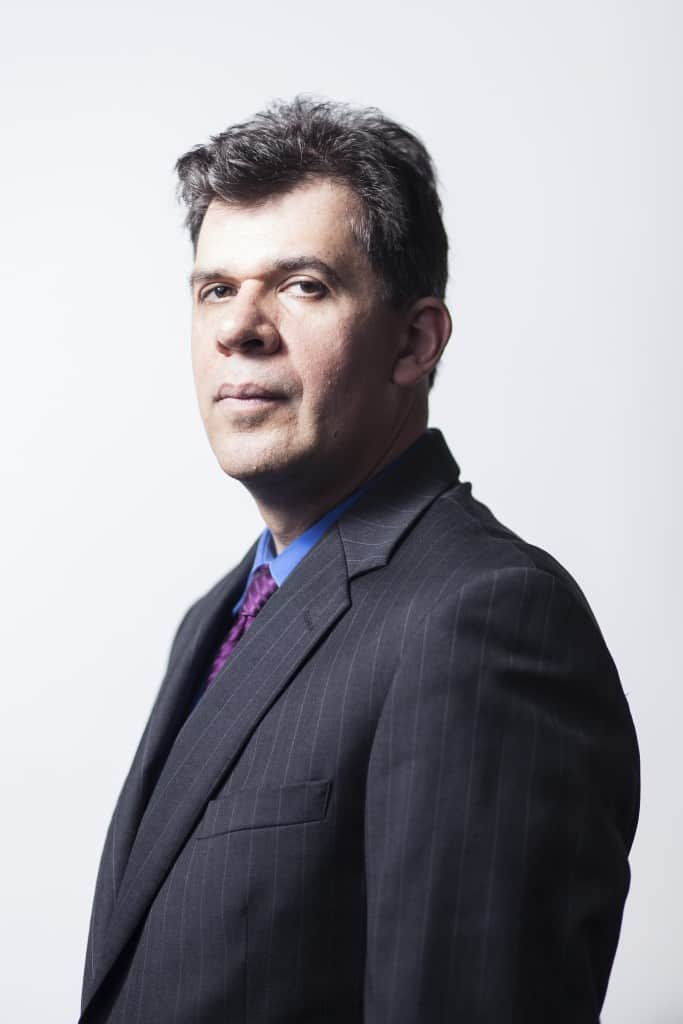
To fix a broken health-care system, Elena Rios of the National Hispanic Medical Association says we need to fix our communication.
Words By Kristen Bahler // Photography By Sheila Barabad
The doctor-patient relationship is a critical component of quality health care. It ensures patients are engaged in their own care and fully comprehend physician instructions.
But for many Hispanic patients and non-Hispanic physicians, that relationship—and the guidance that comes with it—is lost in translation.
Of the licensed physicians in the United States, only about 5 percent are Hispanic according to the National Hispanic Medical Association. Likewise, of the dentists, nurses, and personnel who make up the rest of the health-care community, only about 7 percent are Hispanic. That means few providers have the language skills or cultural competency to serve a diverse population.
It should come as no surprise, then, that Hispanic men and women are disproportionately affected by preventable disease and exhibit poorer health outcomes than other demographics. But while the racial divide that permeates the American healthcare system is making national headlines (see recent reports in the Atlantic and the New York Times), these stories almost always focus on the gap in care between white and black Americans, often overlooking Hispanics entirely.
Of the licensed physicians in the United States, only about 5 percent are Hispanic.
Dr. Elena Rios, president and CEO of the National Hispanic Medical Association, wants to change what we talk about when we discuss gaps in care. The association is a nonprofit based in Washington, DC, that works to improve the health and wellness of the Hispanic community.
Working toward a more equitable health-care system, she says, is critical for the community’s well-being. “When people talk about minority health in this country, they’re usually talking about African Americans,” Rios says. “Hispanics live longer [than some ethnic groups], but they live with a lesser quality of life. We need to change that dynamic.”
The health of America’s growing—and aging—Hispanic population is worrisome from both a social and economic standpoint. Hispanics make up 17 percent of the US population, and that number is expected to rise to about 30 percent by 2050, yet their access to quality care is limited. Hispanics experience higher frequencies of chronic diseases, including diabetes, asthma, and heart disease, than other ethnicities. Hispanic families who live in low-income communities and over-crowded housing also suffer the adverse effects of chronic stress, and they have limited access to medical insurance.
All of this contributes to overburdened emergency rooms, the spread of communicable disease, and a depleted economy.
“It’s a resource problem,” Rios says. “There’s not enough money, particularly for poor neighborhoods, To increase quality care, we need to decrease the cost of the system. And to decrease the cost of the system, we need to get people to seek health care when it’s appropriate, to take their medications, and to be compliant patients.”
To increase quality care, we need to decrease the cost of the system.
More Hispanics need access to health insurance plans and a path to affordable care, Rios says. But they also need to be properly managed once they’re in the system. Since there are few resources for Spanish-speaking, low-income citizens, mending the broken line of communication between health care providers and the Hispanic community is a good place to start.
“If we’re going to have more Latinos in the system, we need more providers who know how to communicate with our communities — to have a rapport with these patients and to make sure they understand what they’re being told,” Rios says. “This is about health-care reform, but it’s also about getting the health-care system to respond to the needs of its patients.”
Hispanic Americans need to understand the complexities of health insurance, the benefits of prevention services, and when to ask for a primary care doctor versus a specialist. These are all details that accompany a normal doctor-patient relationship, yet Rios says it’s currently not being communicated. There’s an obvious solution. “We need better education,” she says. “It’s the missing piece.”
That education could manifest in several ways. Experts could teach medical providers best practices to communicate within minority communities. Scholars could launch research initiatives to improve outcomes for Hispanic patients.
Perhaps most importantly, teachers must encourage and educate young Hispanics in a way that leads them to the medical field and to leadership and advocacy positions, Rios says. “We need motivators in the school system to provide internships in hospitals and clinics for young Hispanics,” Rios says. “We need STEM [science, technology, engineering, and math] programs that lead to health-care careers. We need Hispanic researchers and policy maker and non-Hispanic researchers interested in Hispanic health.”
More than anything, Rios says, “We need more Hispanic Americans to become leaders for the future of the country.”
Learn more about the National Hispanic Medical Association and Dr. Rios’s work here. Read more about this topic in our profile of Dr. Glenn Flores, a member of our Class of 2015.


